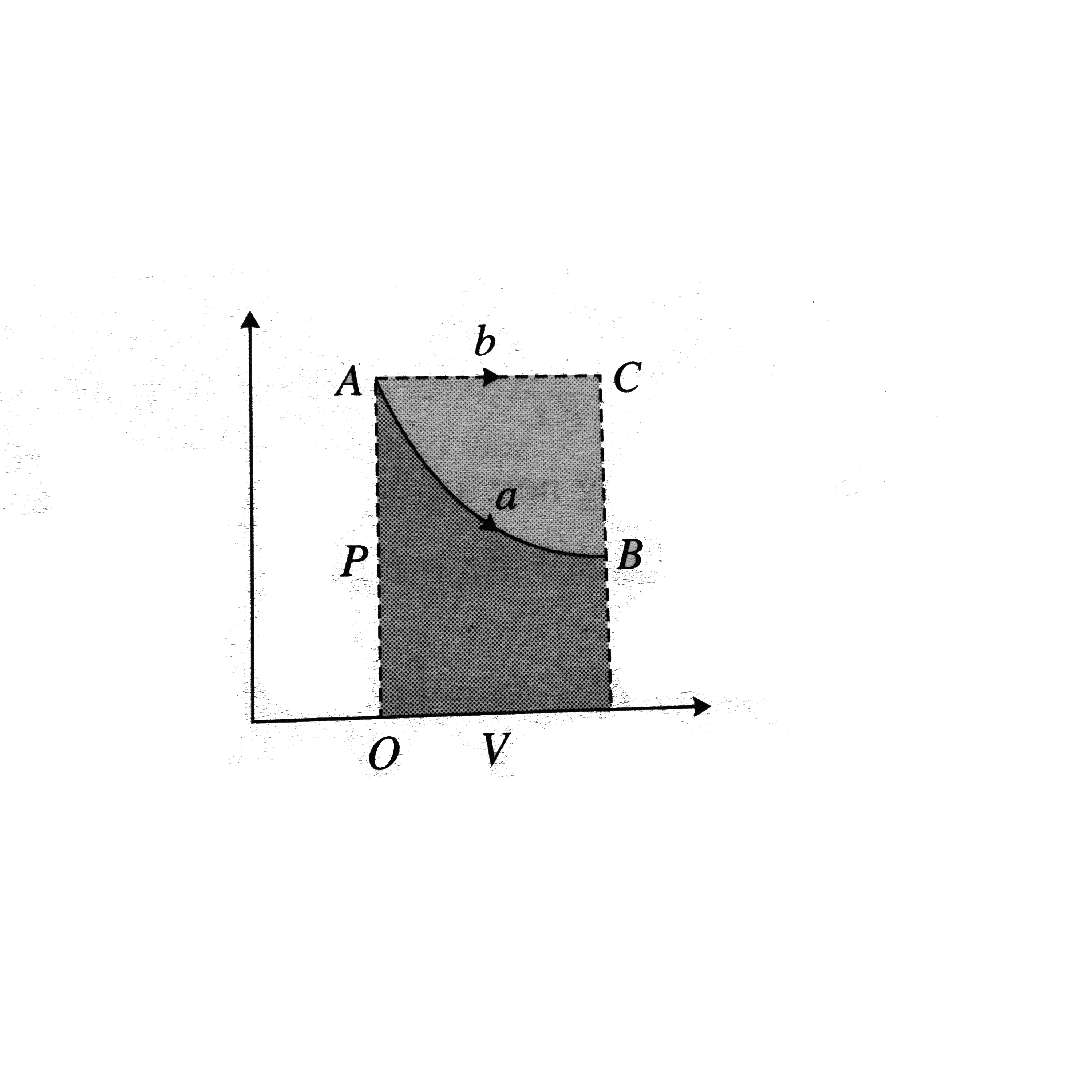A certain balloon maintains an internal gas pressure of P0=100kPa until the volume reaches V0=20m3. Beyond a volume of 20m3, the internal pressure varies as P=P0+2k(V−V0)2 where P is in kPa. V is n m3 and k is a constant (k=1kPa/m3). Initially the balloon contains helium gas at 20∘C, 100kPa with a 15m3 volume. The balloon is then heated until the volume becomes 25m2 and the pressure is 159 kPa. Assume ideal gas behaviour for helium. The work done by the balloon for the entire process in kJ is
1256
1414
1083
1512
The correct Answer is:C
c. Work done by the balloon
W=∫20m315m3P0dV+∫25m320m3PdV
=∫25m315m3P0dV+∫25m320m3[P0+2(V−V0)2]dV
=[100×5+100×5+2×(25−29)33]kJ=1083
Similar Questions
A certain mass of an ideal gas at pressure P1 is adiabatically expanded from an initial volume V1 to a final volume V2. The resulting pressure P2 of the gas is given by:
View SolutionDuring the expansion process the volume of the gas changes form 4m3 to 6m3 while the pressure change according to p=30V+100 where pressure is in Pa and volume is in m3. The work done by gas in N×102J. Find N.
View Solution
Knowledge Check
V=k(PT)0.33 where k is constant. It is an,
Aisothermal processBadiabatic processCisochoric processDisobaric processA spherical balloon of volume V contains helium at a pressure P. How many moles of helium are in the balloon if the average kinetic energy of the helium atoms is →K?
A2PV→KNAB3PVKNAC5PV3KNAD3PVKNAA gas is found to obey the law P2V=constant. The initial temperature and volume are T0andV0. If the gas expands to a volume 3V0, its final temperature becomes
AT03BT0√3C3T0D√3T0
If a gas of a volume V1 at pressure p1 is compressed adiabatically to volume V2 and pressure p2, calculate the work done by the gas.
View SolutionA quantity of gas occupies an initial volume V0 at pressure p0 and temperature T0. It expands to a volume V (a) constant temperature and (b) constant pressure. In which case does the gas do more work ?

View SolutionAn ideal gas expands isothermally from volume V1 to V2 and is then compressed to original volume V1 adiabatically. Initialy pressure is P1 and final pressure is P3. The total work done is W. Then
View SolutionA gas is found to obey the law P2V= constant. The initial temperature and volume are T0 and V0∘ If the gas expands to a volume 3V0, then
View SolutionA sample of gas at 273K has a pressure of P1 and a volume of V1. When the pressure is changed to P2, what is the volume V2? (Assume the temperature remains constant)
View Solution
